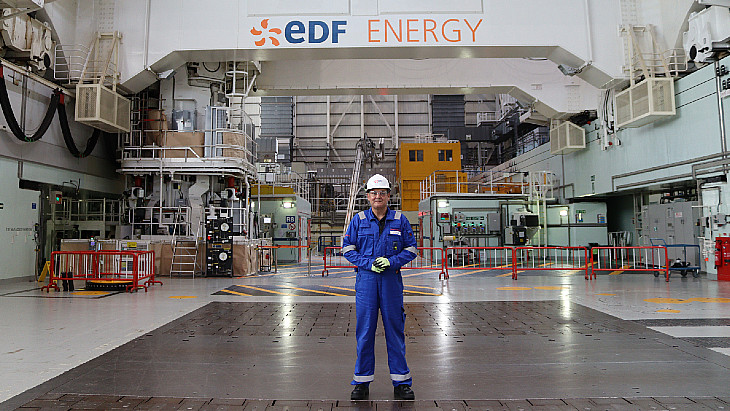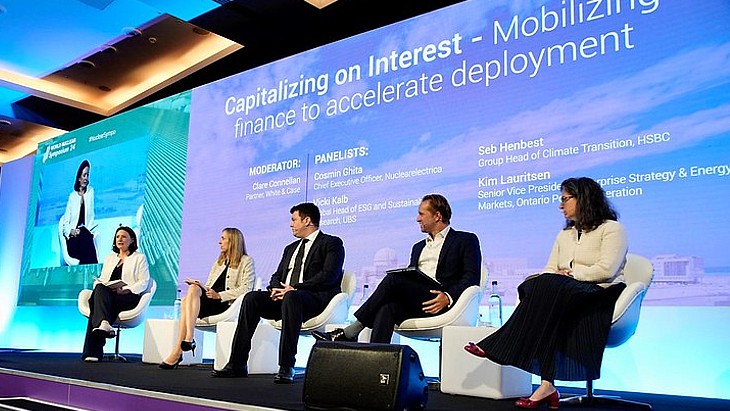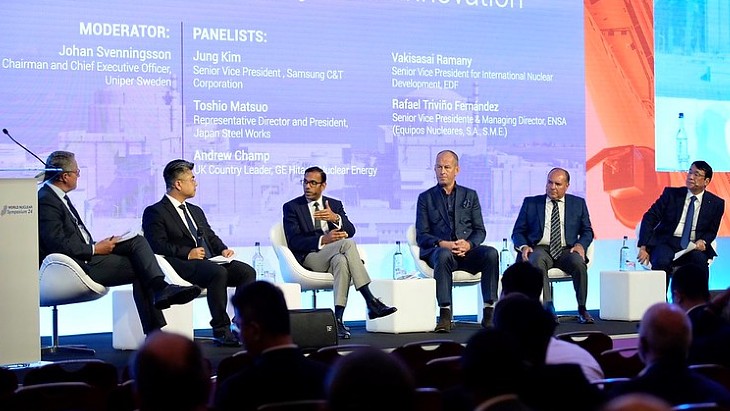Speech: The task ahead for nuclear energy
.jpg)
Decarbonisation has been universally recognised as a basic element of future energy systems. Nuclear power, known for close to zero emissions rate, will have its inherent contribution to the decarbonised electricity production. The Harmony programme's target of 1000 GWe of new nuclear capacity by 2050 seems to be fully compliant with this global agenda. World Nuclear Association is committed to strengthening the pillars of the Harmony programme: harmonised regulatory processes, a level playing field in energy markets, an effective safety paradigm.
The role of nuclear energy and other technologies in future energy systems
The following is the text of Mr. Komarov keynote speech at the conference on 13 November.
First of all, I would like to thank our host, the Ministry of Economy, Trade and Industry, and colleagues from IFNEC and NICE Future for the opportunity to speak in the presence of such a distinguished audience.
For me it is a great honour to represent World Nuclear Association, which has 178 member companies from 38 countries and covers all aspects of the global nuclear industry.
For power sector professionals, it’s evident that nuclear power makes a solid contribution to a sustainable future, from the environmental, economic and innovative perspectives. Still, the industry has to work hard to guarantee a decent share for nuclear in the global energy mix and to remove unfair barriers.
The recent United Nations IPCC report says that it is necessary to fully decarbonise global electricity generation to achieve the Paris Agreement's goal of limiting climate change to well below two degrees. Based on earlier IPCC findings as well as on other studies, it transpires that nuclear is one of the most prudent solutions for decarbonisation, especially considering lifecycle GHG emissions.
Accepting decarbonisation as a sine qua non of the future generation matrix, let's consider a recent study by the Massachusetts Institute of Technology. According to this, a high share of nuclear power is the most cost-effective way of achieving full decarbonisation of electricity production. In addition, it says, costs rise over-proportionally with the share of variable renewable energy forced upon the system.
Moreover, an ongoing study scenario by the OECD Nuclear Energy Agency shows that a mix relying primarily on nuclear could be the most cost-effective option to achieve the decarbonisation target of 50 grams of carbon dioxide equivalent per kilowatt-hour.
Keeping that in mind, World Nuclear Association's well-known Harmony target of 1000 GWe of new nuclear capacity seems very practical. And, if we are going to create a prosperous, sustainable and environmentally friendly world, then the nuclear component looks like a highly viable option. New build rates should increase to around 33 GWe per year - a level already achieved in the mid-1980s.
Achieving the ultimate Harmony target of a 25% share of the world's electricity for nuclear by 2050 as part of a low-carbon mix requires the construction of around 1000 GWe of new nuclear capacity, assuming some capacity retirements for the period.
It's important to note that the global nuclear fleet is already making a considerable contribution to clean and reliable energy supply. Having now crossed the threshold of 400 GWe of installed capacity, nuclear power provides more than 2,500 terawatt hours of low-carbon electricity per year.
New grid connections have accelerated since 2015 and this year more than 15 GWe of nuclear capacity were added to the grid around the world. These include the start-up of Generation III+ reactors in Russia and China, and the construction of first Generation III+ reactors by the USA and France. In addition, there have been restarts of Japanese units after a prolonged shutdown.
However, the potential contribution of nuclear towards the clean energy mix has been constrained by three key barriers. These are, multiple layers of regulation, energy market failure and misconceptions of the safety benefits of nuclear.
This situation requires our urgent attention. To overcome the three barriers, the industry needs harmonised regulatory processes in order to have a more consistent, efficient and predictable international nuclear licensing regime. A level playing field in energy markets, where nuclear is recognised for its value as a reliable, resilient low carbon energy mix, is equally important. Finally, we need an effective safety paradigm that focuses on genuine public wellbeing.
If we manage to remove these barriers, then nuclear will be fully capable of meeting the world's clean energy needs.
If we talk about the potential benefits, then we should also mention innovation, a cornerstone of the industry that will provide for further electricity decarbonisation. Here are just a few examples.
Small modular reactors and floating nuclear power plants that are finding new applications, such as connection to smaller grids or in remote locations; high-temperature gas reactors that could play a key role in supplying process heat; clean electricity or hydrogen production that are expected to decarbonise the transport sector. Finally, fast reactors are seen as the best way to meet practically unlimited nuclear fuel requirements.
My main conclusions.
First, nuclear power can help meet future electricity needs and deliver large-scale, cost-effective decarbonisation to achieve global climate change goals.
Second, nuclear is a proven technology that continues to innovate. It’s important to note that costs and construction times of Gen III+ reactor designs are expected to decrease with experience and fleet effects.
Third, new nuclear technologies are expected to play a key part in decarbonising the transport sector, supplying industrial process heat and district heating.
Last but not least, to maximise nuclear energy's contribution we need fair markets, harmonised regulatory processes and an effective safety paradigm. And we urge governments to help the industry in securing these goals.
As you can see, we have work to do and it will take a huge effort. But I'm convinced that we must advance with these plans and establish nuclear as a pillar for a better energy future.
Mr Komarov is chairman of the board of World Nuclear Association and first deputy director-general for corporate development and international business at Russian state nuclear corporation Rosatom. IFNEC is the International Framework for Nuclear Energy Cooperation, while NICE Future stands for Nuclear Innovation: Clean Energy Future.










